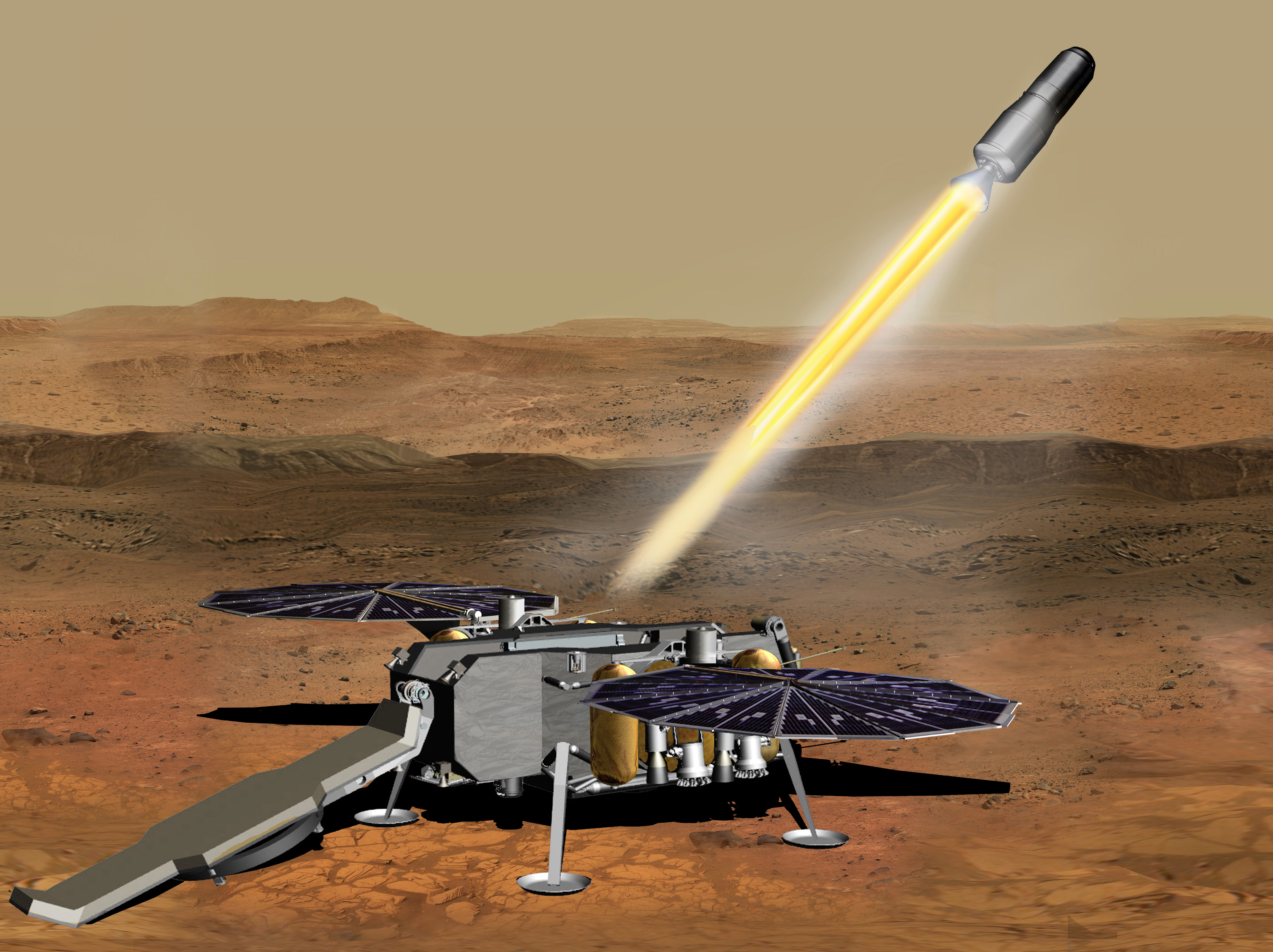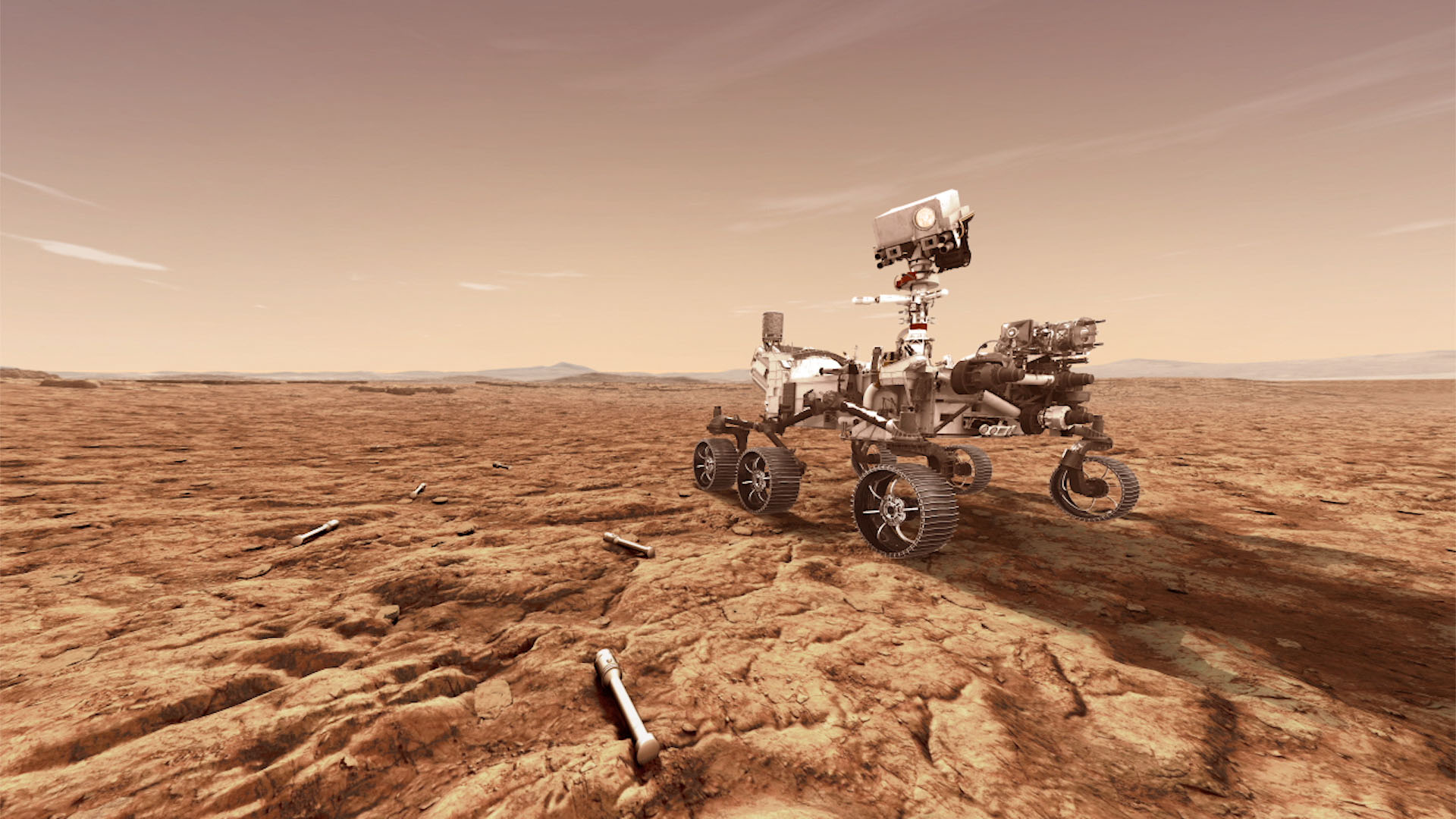Bringing Mars samples to Earth could cost an extra $1 billion, but NASA should totally do it, experts say

Holding a pristine piece of Mars in a lab on Earth is among the most ambitious dreams of planetary scientists, and NASA and its European counterpart want to make the dream a reality.
It's worthwhile, but it isn't going to be easy, an independent group of experts who spent two months poring over the existing plans say in a new report to NASA. That report offers 44 findings and 44 recommendations meant to identify and mitigate weaknesses in current plans and bureaucratic systems related to the mission, all while warning that the mission may still miss its current cost and schedule goals. You can read the report here (PDF).
"We unanimously believe that the Mars sample-return program should proceed; we think its scientific value will be extraordinarily high, with the potential for world-changing discoveries about Earth's nearest planetary neighbor, and possibly about an independent origin of life on another world," David Thompson, chair of the independent review board and former president of commercial space company Orbital ATK (now part of Northrop Grumman Space Systems), said during a news conference held Tuesday (Nov. 10). "However, as the first round-trip mission to another planet, Mars sample return is also an extremely ambitious, technically demanding and operationally complex program."
In photos: NASA's Mars Perseverance rover mission to the Red Planet
Although the board found that crucial later spacecraft in the mission may be able to launch in 2026, as NASA and the European Space Agency (ESA) currently hope, the next launch window, which is in 2028, may well be more likely. NASA plans to continue targeting the earlier launch date and delay down the line as necessary, agency leadership emphasized.
"Basically, the way we're interpreting the collective set of recommendations is full steam ahead," Thomas Zurbuchen, NASA's associate administrator for science, said during the news conference. "The last thing that we want to do is kind of turn a switch right now, without really investigating this and looking at all options."
The board also suggested that given that potential delay and other factors, a safer bet would be to budget between $3.8 billion and $4.4 billion, perhaps 30% higher than the number NASA is currently using.
Breaking space news, the latest updates on rocket launches, skywatching events and more!
An ambitious project
NASA created the independent review board in August to evaluate early plans for the larger suite of Mars sample-return missions and identify potential problems as early as possible.
As envisioned, the Mars sample-return program is a vast endeavor shared by two large space agencies that will require several separate spacecraft operating over more than a decade, not to mention the first rocket launch from the Red Planet's surface and a host of measures to prevent sample contamination.
The report focuses on the future spaceflight aspects of the mission — how Perseverance and its staff will interact with future missions, what those spacecraft will look like, and the complicated process of getting that precious cargo safely off the surface of Mars and into laboratories on Earth. (The mission will also require a new sample-curation facility, which the board did not evaluate.)
Mars exploration is never easy. The Red Planet is notorious for its tricky launch calendar, with favorable opportunities spaced 26 months apart, slow communications, and perilous landing conditions.
"Every mission to Mars has things that we're worried about," Jeffrey Gramling, NASA's Mars Sample Return program director, said during the news conference.
NASA and ESA also hope to launch the mission while the Mars 2020 rover Perseverance, currently on its way to the Red Planet, is still operational. The rover will land on Mars on Feb. 18 and work on the Red Planet's surface for at least one Martian year (687 Earth days), although many of NASA's robotic explorers have remained active far longer than the duration of their primary mission.
And it's not like NASA has a ton of free time on its hands: The agency's two key spacecraft-manufacturing centers have their hands full with other ambitious projects like the James Webb and Roman space telescopes and the Europa Clipper mission. So the review board recommends a host of measures to ensure that NASA shares the work between its centers carefully and can build on previous experience.
"The only reason we did it is to enhance our opportunities to be successful by opening our eyes wide," Zurbuchen said of the independent review process. "I want us to really challenge ourselves for missions, but we want to do so every time by keeping our eyes open and learning from every opportunity we have."
Related: A brief history of Mars missions
Devil in the details
Many of the report's recommendations are deeply bureaucratic, like considering how work is shared between different NASA centers, all of which are working on plenty of other projects, and arranging ways to house NASA and ESA staff at each other's facilities.
The board also recommended management changes to the Mars 2020 mission. One would incorporate the rover's oversight into a broader Mars sample-return program now rather than waiting until the future missions are underway; another would see activities related to sample return prioritized above Perseverance's other possible work.
Another issue that arose in the report were questions about whether NASA and ESA have fully explored all their options for the most successful design of specific pieces of the mission. The sample-fetching rover, for instance, builds on the European/Russian ExoMars rover scheduled to launch in 2022, but may benefit from additional mobility improvements, for example. Currently, all planned surface missions are designed to be solar-powered, but adding nuclear power may make the mission less vulnerable.
And the report notes that in addition to the staggering complexity of the Mars sample-return endeavor, it's not open to much of what NASA jargon dubs "descoping" — essentially, corners that can be cut along the way should a mission be facing budget or schedule shortfalls.
One of the few measures the agencies could use if the endeavor finds itself backed into a corner would be to delay the launch of one or more of the later mission spacecraft, which NASA and ESA are tentatively targeting for 2026.
The next launch opportunity toward Mars comes in 2028, but any later and things get tricky. If surface missions slip into the 2030s, major components of the project will need to be overhauled, independent review board member Peter Theisinger of NASA's Jet Propulsion Laboratory in California said during the news conference. "The conditions when you arrive at Mars change dramatically over the Martian year," Theisinger said. "Launch opportunities after 2028 don't arrive at a very attractive season."
But despite all the complications, bringing Martian rocks to Earth is worth it, the board is confident. "The science would be very exciting," Maria Zuber, a member of the review board and a planetary scientist at the Massachusetts Institute of Technology, said during the news conference.
"We've done a lot of analyses in situ with Mars rocks on the surface of Mars, and clearly those have been very valuable," she said. "But what you can do with a rock bringing it back and working in a terrestrial lab … [the samples] will produce a timeline essentially of the history of what was going on in this crater."
Email Meghan Bartels at mbartels@space.com or follow her on Twitter @meghanbartels. Follow us on Twitter @Spacedotcom and on Facebook.

Meghan is a senior writer at Space.com and has more than five years' experience as a science journalist based in New York City. She joined Space.com in July 2018, with previous writing published in outlets including Newsweek and Audubon. Meghan earned an MA in science journalism from New York University and a BA in classics from Georgetown University, and in her free time she enjoys reading and visiting museums. Follow her on Twitter at @meghanbartels.

